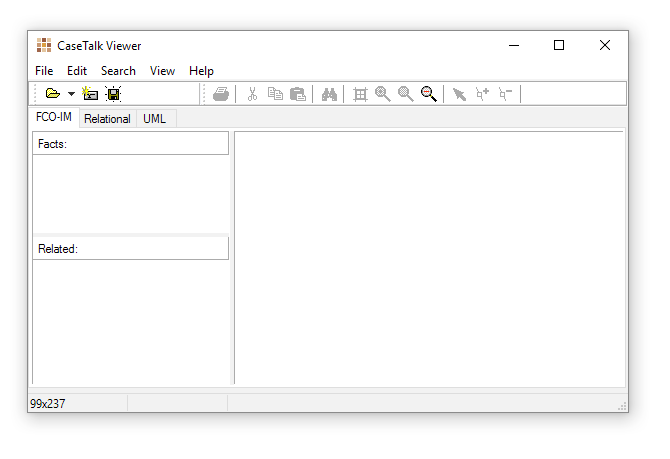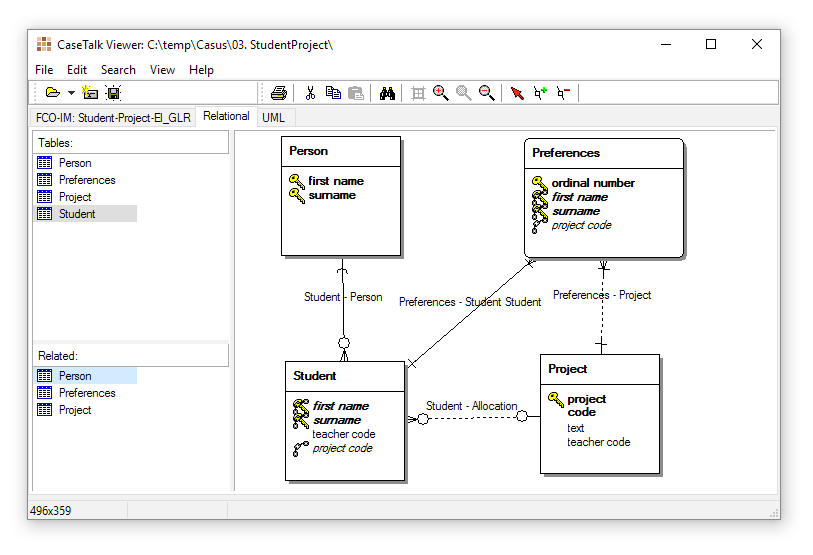Viewer: 2/Main
From CaseTalk Wiki
< Viewer:2
Viewer Main Window
There are three tabs available where you may drag and drop items onto the diagram area.
FCO-IM
Logical
The logical tab shows the tables, columns, primary keys, foreign keys. They are not drawn by hand, simply derived and visualized from the CaseTalk Modeler files. Some remarks are in place to explain the diagram:
- Person is a regular table with two columns, both part of the primary key (hence the key icon).
- Student is a table which has a subtype relation towards the supertype Person. A curved short line is drawn to indicate this. Zero or more Students are a subtype of Person. And the Project Code refers to the Project table, indicated by the chain icon.
- At least one Student needs to exist to register Preferences. And Preferences may occur once or more.
- Preferences is so called weak table. Since the primary key consists of columns which are used in a a foreign key. In other words, the Preferences cannot be identified by itself, it requires the Student as well. Therefor the table is considered to be a weak entity type.
- The Project table can be populated without the existence of Preferences or Students. The ProjectCode in Student references a Project, yet it is not mandatory and not required to identify any Student. Therefor the foreign keys for Project are both considered to be weak relations.
UML
The UML panel shows the UML Classes, properties and their relations. Some remarks are in place to explain the diagram:
- Person, Preferences, Student, Teacher and Project are classes.
- Person has two attributes FirstName and Surname.
- Student is a subclass of Person, drawn as an pointing triangle.
- Preferences is dependent on two other class for its existence, hence the lines pointing towards the other required classes with an arrow.
- Teacher also shows a method Check_2 which shows the Teacher instance should check if the properties for Student and Project exist.
- Additionally the numbers indicate cardinality. For instance: a Teacher is mentor for 1 or more Students, and every Student requires 1 Teacher as mentor.



